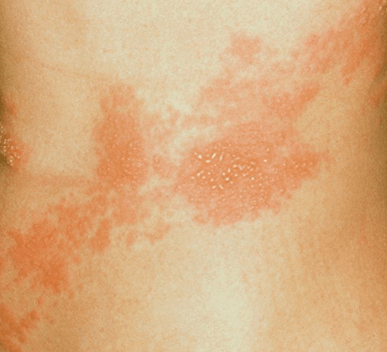Shingles, also known as herpes zoster, is a painful viral infection that appears as a rash, typically forming around one side of your torso, although the infection can form anywhere on your body. A few days before the rash appears, you may experience tingling, itching, burning, soreness, or pain on a localized area on one side of your body. The rash usually appears with blisters on a red base in the same area as the symptoms.
Tues: 8:30am - 3:00pm
Wed: 12:00pm - 6:00pm
Thurs: 8:30am - 3:00pm
Fri: Closed
Sat: 8:30am - 12:30pm
Sun: Closed
Greenvale, NY 11548
Shingles


What is shingles?
What causes shingles?
Shingles is caused by the varicella-zoster virus. This is also the virus that causes chickenpox. Once the chickenpox symptoms resolve, the virus lies dormant in nerve tissues close to the brain and spinal cord. Shingles is a reactivation of the chickenpox living in one segment of the nerves. This can develop years after you’ve had chickenpox or a vaccination against chickenpox and is usually the result of a weakened immune system. The infection can be extremely painful, but it is not life threatening.
How dermatologists diagnose shingles
Your dermatologist will make a clinical diagnosis of shingles by examining the skin rash where you are experiencing pain and blistering. Sometimes it may be necessary to take a small skin sample for further testing to rule out other conditions. Your dermatologist may also ask about your medical history, including whether you’ve had chickenpox, undergone radiation or chemotherapy treatment, take any immunosuppressive medications, and whether you have any diseases that weaken your immune system.
People older than 60 years old are at higher risk for developing shingles as well as experiencing complications from the virus, including lasting nerve pain and vision problems if the infection involves the nerves around the eye.
How dermatologists treat shingles
There is a vaccine for preventing shingles, although it does not cure the onset of shingles. Once you have an outbreak, your dermatologist can recommend a plan of treatment to ease the pain of shingles and reduce the rash. Your dermatologist may prescribe anti-viral and pain medications to attack the virus and make you feel more comfortable while the rash heals. Your dermatologist may also suggest steps you can take at home to ease the itching and pain of shingles. If you believe you may have shingles, it’s important to seek medical attention. Your dermatologist can help you with pain management and help you heal faster. Avoid contact with women who are pregnant, anyone who has not had chickenpox or has not been vaccinated against the virus, and people who have weak immune systems. Once the blisters have completely scabbed over, the condition is no longer contagious.
If you are concerned about shingles, click here to schedule an appointment with our board-certified dermatologists or walk into Walk-in Dermatology at your convenience for immediate evaluation.






